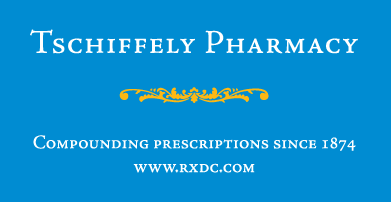
To Buy Provigil Online Visit Our Pharmacy ↓

Understanding the Origins: Provigil and Coffee
Provigil, known generically as modafinil, was developed in late 20th-century France as a treatment for sleep disorders. Originally intended to help narcoleptic patients stay awake, it quickly gained a reputation for enhancing cognitive function and alertness. Unlike other amphetamine-based stimulants, Provigil operates in a unique way, influencing certain neurotransmitter pathways without the addictive risks.
Coffee's history, however, is much older, stretching back to the ancient coffee forests of Ethiopia. According to legend, it was discovered by a goat herder who noticed his flock frolicking energetically after consuming the berries. Coffee spread to the Arabian Peninsula, where it became a central part of social gatherings and religious rituals.
| Aspect | Provigil | Coffee |
|---|---|---|
| Origin | 20th-century France | Ancient Ethiopia |
Chemical Composition: What Sets Them Apart?

Provigil, known chemically as modafinil, is a synthetic compound that influences certain neurotransmitter pathways in the brain. Unlike coffee, which derives its stimulating effects from naturally occurring caffeine, modafinil does not belong to the stimulant class, making its mechanism of action unique. Caffeine works primarily by inhibiting adenosine receptors, thus preventing drowsiness and promoting wakefulness. In contrast, Provigil appears to operate through a more targeted modulation of brain processes, involving the activation of wake-promoting neurons and possibly altering the levels of dopamine. This fundamental difference underscores how each substance interacts with our brain chemistry, offering distinct pathways to achieving that sought-after alertness.
Effects on the Brain: Focus and Alertness
Provigil, known generically as modafinil, is a synthetic stimulant that promotes wakefulness by enhancing the production of neurotransmitters such as dopamine and norepinephrine. It targets specific receptors in the brain, supporting sustained attention and concentration. In contrast, coffee works its magic through caffeine, a natural stimulant. Caffeine acts by blocking adenosine, a chemical responsible for promoting sleep, resulting in increased neuron firing and dopamine release. While both Provigil and coffee boost alertness, their mechanisms of action are distinct, influencing their overall impact on cognitive performance.
Duration and Onset: Staying Power Compared

In the race between Provigil and the morning cup of coffee, it's all about timing. Provigil, a prescription medication often used for conditions like narcolepsy, takes about 30 minutes to an hour to kick in, offering a prolonged period of wakefulness that can last up to 15 hours. This makes it particularly appealing for those needing sustained alertness over extended periods. In comparison, coffee, the trusty brew relied upon by millions, works faster; its effects can be felt within 15 to 45 minutes, but typically peak around the one-hour mark and last for about 4 to 6 hours, requiring subsequent doses for prolonged alertness.
Provigil’s extended duration makes it a formidable alternative for those tackling long shifts or night work, providing a sustained level of focus without the need for frequent re-dosing. While a steaming cup of coffee can be quickly brewed and consumed, weaving itself effortlessly into daily routines, its shorter duration necessitates repeated indulgence, often leading to that infamous caffeine crash. Hence, for those who seek longevity without the rollercoaster of peaks and troughs, Provigil might seem like the knight in shining armor, staving off fatigue with a single dose.
However, this comparison isn’t just about function—it’s a matter of preference and lifestyle. A leisurely coffee break can be a comforting ritual, a moment of pause in a busy day. Provigil, on the other hand, is less about ritual and more about consistent performance. Each has its proponents, and understanding their nuances can empower individuals to choose the stimulant that best suits their unique rhythms and demands.
Potential Side Effects and Health Considerations
When comparing Provigil and coffee, it's important to consider their potential side effects. Provigil, known for promoting wakefulness in conditions like narcolepsy, can sometimes lead to headaches, nervousness, and difficulty sleeping. These effects can influence lifestyle choices and may require medical consultation. Conversely, coffee is a daily staple for millions, but excessive intake can lead to jitteriness, insomnia, and increased heart rate.
Some people might build tolerance, requiring higher doses to achieve the same effect, which is a consideration for both substances. Provigil also has a broader systemic impact due to its pharmaceutical nature. Each choice brings a unique set of risks to evaluate within one's health priorities. Understanding these implications can guide a more informed decision.
| Substance | Common Side Effects |
|---|---|
| Provigil | Headache, nervousness, insomnia |
| Coffee | Jitteriness, insomnia, increased heart rate |
Cost and Accessibility: the Practical Perspective
From a cost perspective, coffee is significantly more affordable and accessible, being a staple in homes and cafes worldwide. This everyday availability makes it an easy choice for many seeking a quick energy boost. In contrast, Provigil, known generically as modafinil, requires a prescription and tends to be costly, though insurance may cover part of the price. Accessibility is further limited, as its legal acquisition demands a healthcare provider consultation.
For more detailed insights on Provigil, visit these sources:NCBI and PubMed.